Dream Dream Dream



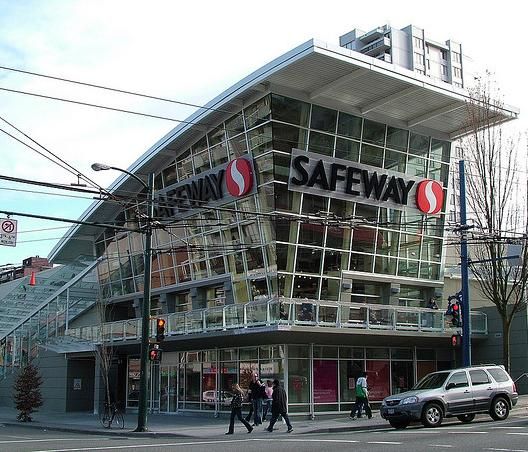
(safeway2.jpg)
Safeway Supermarket
on Robson street, Vancouver
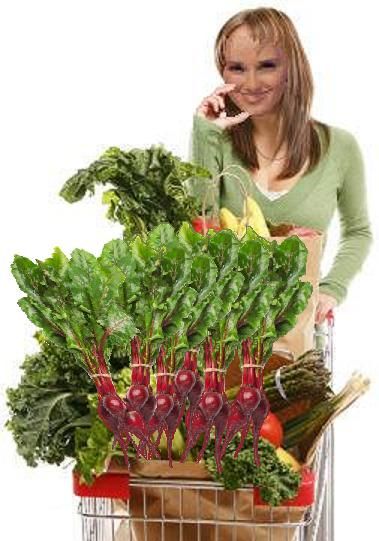
(cart02b.jpg)

Diane, how come you carry so many beet-roots?

I'm on a beet-diet.
On a beet-diet? Why is that?
...'Cause I'm challenging Jennifer O'Neill.
How do you mean, Diane?
The other day, you mentioned that Jennifer O'Neill had been married nine times to eight husbands.
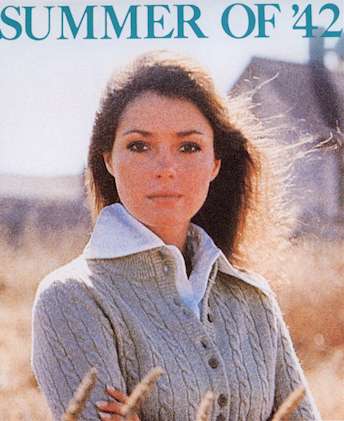
(sumer42b.jpg)

Yes, I said that. So what?

I think I'm gonna marry ten times.
No kidding.
Kato, you're gonna be my tenth husband.
Holy cow! Why don't you push me up in your waiting list? Maybe ... to the second position in the list.
I'm sorry. I can't do that. My first husband died of pancreatic cancer. I've been happily married to my second husband, and I can't change my waiting list.
Why not? Diane, listen to me. You're the sunshine of my life. That's why I'll always be around. You are the apple of my eye. So, forever you'll stay in my heart.
Kato, don't repeat somebody else's killing phrase!

Stevie Wonder uses the above phrase in the song, doesn't he?

Oh ..., you like the song, don't you? Anyway, believe me, Diane. I feel like this is the beginning 'though I've loved you for a million years. And if I thought our love was ending I'd find myself drowning in my own tears.
Cut it out, Kato. They say, "First-come first-served." You showed up late in my life, Kato. You must stay in the tenth position in my list.
But I wonder what this marriage list has got to do with the beet-diet?
Well ... I can't break my marriage vow. Divorce isn't my choice. So I've gotta live long enough to marry my tenth husband.
Are you saying that the beet-diet will make you live long enough to marry ten times?
Yes, of course, that's why I've picked up this many beet-roots here.

(cart02b.jpg)

Wow! ... But I've never heard that beet-roots do you any good.

Kato, you've gotta remember that beet-roots contain oxalic acid, which is a competitive inhibitor of the lactate dehydrogenase(LDH) enzyme. As cancer cells preferentially use anaerobic respiration, inhibition of LDH has been shown to inhibit tumor formation and growth, thus is an interesting potential course of cancer treatment.
I see... So beet-roots should be able to strengthen the power of the natural cancer-killer in your body, shouldn't they?
You're telling me, Kato---so that I'll be able to marry you in the future as my tenth husband.

Kato, this is a ridiculous dream, isn't it?

I don't think so... This dream came along naturally.
What do you mean?
Well, as a matter of fact, I read the following passage last night before I went to bed.
London Tasted
London explored, and now that I was comfortably settled in Mrs. Dodd's boarding house for students in Bulstrode Street, it seemed that things were shaped for steady, hard work.
Besides all-day Life Class at the Westminsyer School of Art, I joined night classes---design, anatomy, clay modeling.
Againt London I was not quite so rebellious, though I did not like life in a great city.
。。。
The orthodox sights I found wearing.
The Zoo I never tired of, nor of Kew Gardens, St. Paul's, the Abbey cloisters.
I took endless rides on bus-tops, above the crowd yet watching intently the throngs of humanity.
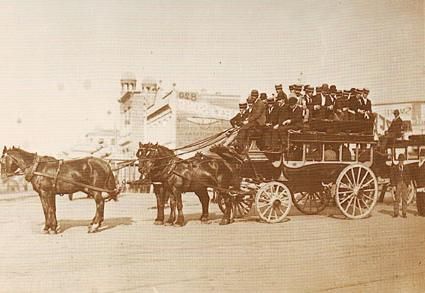
(bus005.jpg)
。。。
The food at Mrs. Dodds' had no more variety than a calendar.
You knew exactly what the kitchen saucepans were doing without the help even of your nose.
Sunday's supper was the peak of misery.
The maids were out; we helped ourselves to the everlasting monotony---same old cold ham, same salad, same cake, same sliced pineapple.
Why couldn't the salad have been other than beet-root and lettuce?
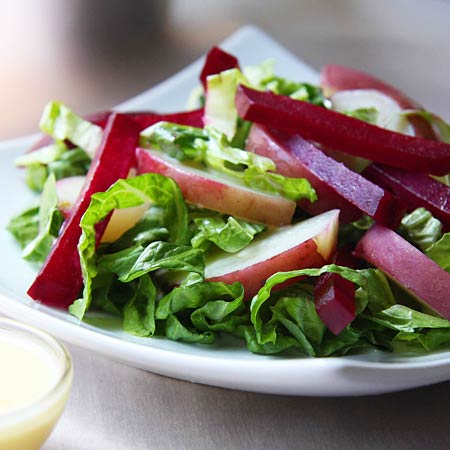
(beet02.jpg)
Why not another canned fruit than pineapple?
Everyone who could wangle an invite to sup out on Sunday wangled.

(yorkshire2.jpg)
When it came to bed time, one cubicle would brag, "I had roast beef and Yorkshire."
Groans!
"I had duck and green peas," from another cubicle.
More groans.
"Must you gloat over your greed!" from a cubicle who had suppered at home.
Bedclothes dragged over heads, there was savage, "goody-hungry" quiet.
(pictures from Denman Library)
SOURCE: pp.205-209 "Growing Pains"
The Autobiography of Emily Carr
Published in 1946
London explored, and now that I was comfortably settled in Mrs. Dodd's boarding house for students in Bulstrode Street, it seemed that things were shaped for steady, hard work.
Besides all-day Life Class at the Westminsyer School of Art, I joined night classes---design, anatomy, clay modeling.
Againt London I was not quite so rebellious, though I did not like life in a great city.
。。。
The orthodox sights I found wearing.
The Zoo I never tired of, nor of Kew Gardens, St. Paul's, the Abbey cloisters.
I took endless rides on bus-tops, above the crowd yet watching intently the throngs of humanity.

(bus005.jpg)
。。。
The food at Mrs. Dodds' had no more variety than a calendar.
You knew exactly what the kitchen saucepans were doing without the help even of your nose.
Sunday's supper was the peak of misery.
The maids were out; we helped ourselves to the everlasting monotony---same old cold ham, same salad, same cake, same sliced pineapple.
Why couldn't the salad have been other than beet-root and lettuce?

(beet02.jpg)
Why not another canned fruit than pineapple?
Everyone who could wangle an invite to sup out on Sunday wangled.

(yorkshire2.jpg)
When it came to bed time, one cubicle would brag, "I had roast beef and Yorkshire."
Groans!
"I had duck and green peas," from another cubicle.
More groans.
"Must you gloat over your greed!" from a cubicle who had suppered at home.
Bedclothes dragged over heads, there was savage, "goody-hungry" quiet.
(pictures from Denman Library)
SOURCE: pp.205-209 "Growing Pains"
The Autobiography of Emily Carr
Published in 1946

So you read the autobiography of Emily Carr, didn't you?

Yes, I did. The horse-drawn omnibus reminds me of the postcard you sent me the other day.
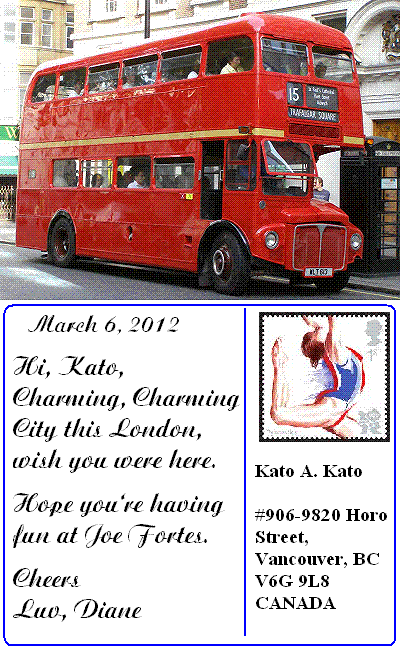
(postcd2.gif)

... and the "beet-root and lettuce" salad definitely makes you shop beet-roots at Safeway in my dream.

But how come you read her autobiography?
Well ... I happened to view her DVD.
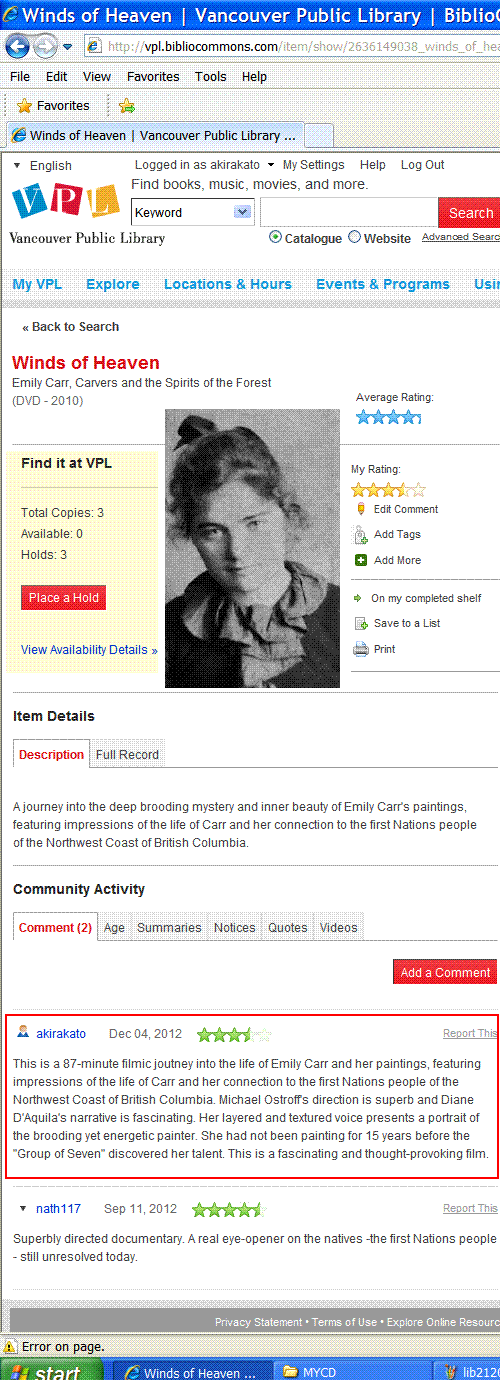
(lib21206c.gif)
■"The Actual Catalogue Page"

The 87-minute filmic joutney into the life of Emily Carr and her paintings interested me greatly so much so that I looked into her autobiography.
Emily Carr
(December 13, 1871 – March 2, 1945)
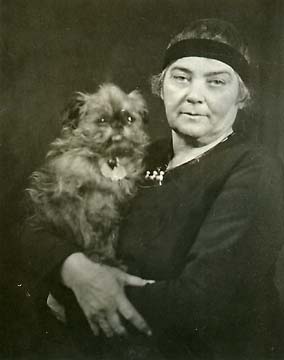
(carr04.jpg)
She was a Canadian artist and writer heavily inspired by the indigenous peoples of the Pacific Northwest Coast.
One of the first painters in Canada to adopt a modernist and post-impressionist painting style, Carr did not receive widespread recognition for her work until later in her life.
As she matured, the subject matter of her painting shifted from aboriginal themes to landscapes, and in particular, forest scenes.
As a writer, Carr was one of the earliest chroniclers of life in British Columbia.
Born in Victoria, British Columbia, in 1871, the year British Columbia joined Canada, Emily Carr was the second-youngest of six children born to English parents Richard and Emily (Saunders) Carr.
The Carr home was on Birdcage Walk, (now Government Street) in the James Bay district of Victoria, a short distance from the legislative buildings (nicknamed the 'Birdcages') and the town itself.
Emily was taught in the Presbyterian tradition, with Sunday morning prayers and evening Bible readings.
Emily's father encouraged her artistic inclinations, but it was only in 1891, after her parents' deaths, that Carr pursued her art seriously.
Carr attended the San Francisco Art Institute for two years (1890–1892) before returning to Victoria.
In 1899 Carr traveled to London where she studied at the Westminster School of Art.
She traveled also to a rural art colony in St Ives, Cornwall, returning to British Columbia in 1905.
Carr took a teaching position in Vancouver at the 'Ladies Art Club' that she held for no longer than a month — she was unpopular amongst her students due to her rude behaviour of smoking and cursing at them in class, and the students began to boycott her class.
In 1927 Carr herself traveled east, timing her journey so that she would be able to meet members of the Group of Seven, at that time Canada's most recognized modern painters.
Lawren Harris of the Group became a particularly important support: "You are one of us," he told Carr, welcoming her into the ranks of Canada's leading modernists despite her own self-deprecating attitude.
The encounter changed the direction of Carr's artistic life, reinvigorating her sense of purpose and ending her artistic isolation of the previous 15 years.
Group of Seven
Source: "Emily Carr"
Free encyclopedia "Wikipedia (Wikipedia)"
(December 13, 1871 – March 2, 1945)

(carr04.jpg)
She was a Canadian artist and writer heavily inspired by the indigenous peoples of the Pacific Northwest Coast.
One of the first painters in Canada to adopt a modernist and post-impressionist painting style, Carr did not receive widespread recognition for her work until later in her life.
As she matured, the subject matter of her painting shifted from aboriginal themes to landscapes, and in particular, forest scenes.
As a writer, Carr was one of the earliest chroniclers of life in British Columbia.
Born in Victoria, British Columbia, in 1871, the year British Columbia joined Canada, Emily Carr was the second-youngest of six children born to English parents Richard and Emily (Saunders) Carr.
The Carr home was on Birdcage Walk, (now Government Street) in the James Bay district of Victoria, a short distance from the legislative buildings (nicknamed the 'Birdcages') and the town itself.
Emily was taught in the Presbyterian tradition, with Sunday morning prayers and evening Bible readings.
Emily's father encouraged her artistic inclinations, but it was only in 1891, after her parents' deaths, that Carr pursued her art seriously.
Carr attended the San Francisco Art Institute for two years (1890–1892) before returning to Victoria.
In 1899 Carr traveled to London where she studied at the Westminster School of Art.
She traveled also to a rural art colony in St Ives, Cornwall, returning to British Columbia in 1905.
Carr took a teaching position in Vancouver at the 'Ladies Art Club' that she held for no longer than a month — she was unpopular amongst her students due to her rude behaviour of smoking and cursing at them in class, and the students began to boycott her class.
In 1927 Carr herself traveled east, timing her journey so that she would be able to meet members of the Group of Seven, at that time Canada's most recognized modern painters.
Lawren Harris of the Group became a particularly important support: "You are one of us," he told Carr, welcoming her into the ranks of Canada's leading modernists despite her own self-deprecating attitude.
The encounter changed the direction of Carr's artistic life, reinvigorating her sense of purpose and ending her artistic isolation of the previous 15 years.
Group of Seven
Source: "Emily Carr"
Free encyclopedia "Wikipedia (Wikipedia)"

So you're fascinated by the brooding yet energetic painter, aren't you?

Yes, I am.
Did you find anything important at all?
Oh yes, she had never been married. This is the big difference between you and Emily.
Kato, you had such a foolish dream. Don't confuse realty with your dream.

【Himiko's Monologue】

Wow!
I wish I could visit London and ride the red double-decker bus.
Buses have been used on the streets of London since 1829, when George Shillibeer started operating his horse drawn omnibus service from Paddington to the city.

(bus005.jpg)
In 1855 the London General Omnibus Company or LGOC was founded to amalgamate and regulate the horse-drawn omnibus services then operating in London.
LGOC began using motor omnibuses in 1902.
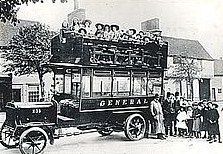
(bus003.jpg)
The last LGOC horse-drawn bus ran on 25 October 1911, although independent operators used them until 1914.
In any case, I hope Kato will write another interesting article soon.
So please come back to see me.
Have a nice day!
Bye bye ...


Wow!
I wish I could visit London and ride the red double-decker bus.
Buses have been used on the streets of London since 1829, when George Shillibeer started operating his horse drawn omnibus service from Paddington to the city.

(bus005.jpg)
In 1855 the London General Omnibus Company or LGOC was founded to amalgamate and regulate the horse-drawn omnibus services then operating in London.
LGOC began using motor omnibuses in 1902.

(bus003.jpg)
The last LGOC horse-drawn bus ran on 25 October 1911, although independent operators used them until 1914.
In any case, I hope Kato will write another interesting article soon.
So please come back to see me.
Have a nice day!
Bye bye ...


If you've got some time,
Please read one of the following artciles:

■"Diane Chatterley"
■"From Canada to Japan"
■"From Gyoda to Vancouver"
■"Film Festival"
■"Madame Taliesin"
■"Happy Days"
■"Vancouver Again"

■"Midnight in Vancouver"
■"Madame Lindbergh"
■"Dead Poets Society"
■"Letters to Diane"
■"Taliesin Studio"

■"Wright and Japan"
■"Taliesin Banzai"
■"Memrory Lane to Sendai"
■"Aunt Sleepie"
■"Titanic @ Sendai"
■"Birdcage"

(sylvie121.jpg)
■"Roly-poly in the wild"
■"Silence is dull"
■"Zen and Chi Gong"
■"Piano Lesson"
■"Dangerous Relation"
■"Electra Complex"

(juneswim.jpg)
■"Covent Garden"
■"Fatal Relation"
■"Notre Dame"
■"Anne Frank"
■"Biker Babe"
■"Diane Girdles the Globe"
■"Diane in Casablanca"
■"Infidelity Neighbourhood"
■"Forest Bathing"
■"Enjoy Ramen!"
■"Sex, Violence, Love"

■"Halifax to Vancouver"
■"A Thread of Destiny"
■"Fujiyama Geisha"
■"Beaver Lake"
■"God is Near!"
■"Holy Cow@Rose Garden"
■"Vancouver Earthquake"
■"Birthplace"

■"KIFF"
■"You Love Japan, eh?"
■"Eight Bridges"
■"First Love"
■"Fright on Flight"
■"Boy's Movie"
■"From Summer to Eternity"
■"Sōseki & Glenn Gould"


Hi, I'm June Adams.
Emily Carr suffered a heart-attack in 1937, and another in 1939, forcing her to move in with her sister Alice to convalesce.
In 1940 Emily suffered a serious stroke, and in 1942 she had another heart attack.
With her ability to travel curtailed, Emily's focus shifted from her painting to her writing.
The assistance of her friend Ira Dilworth, principal of Victoria High School, enabled Carr to see her own first book, Klee Wyck, published in 1941.
Carr was awarded the Governor-General's Award for non-fiction the following year for the work.
Emily Carr University
Halloween 2011

ところで、愛とロマンに満ちた
レンゲさんのお話をまとめて
『レンゲ物語』を作りました。
もし、レンゲさんの記事をまとめて読みたいならば、
次のリンクをクリックしてくださいね。
■『愛とロマンのレンゲ物語』

■『軽井沢タリアセン夫人 - 小百合物語』
とにかく、今日も一日楽しく愉快に
ネットサーフィンしましょうね。
じゃあね。







0 件のコメント:
コメントを投稿